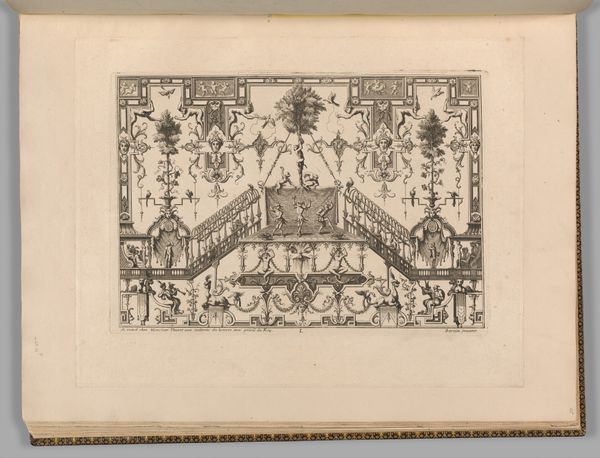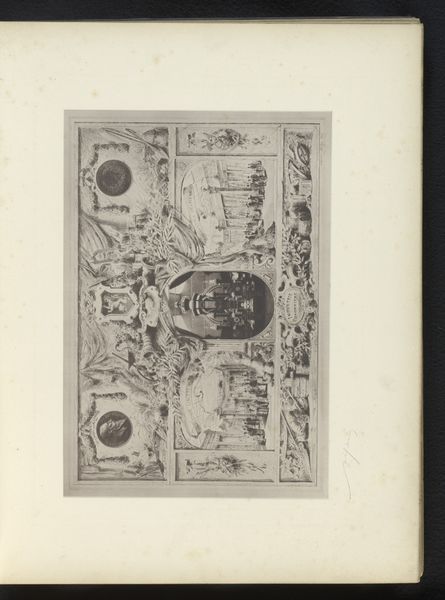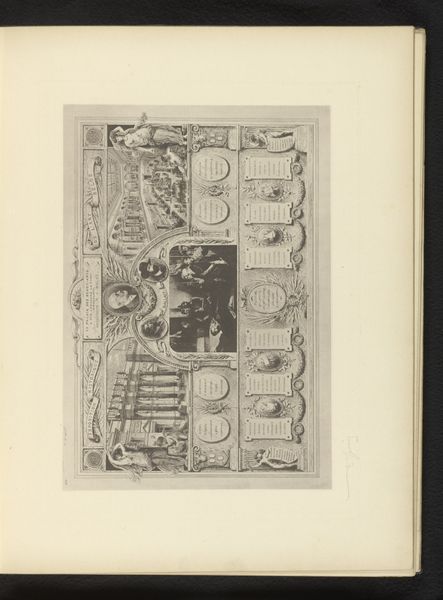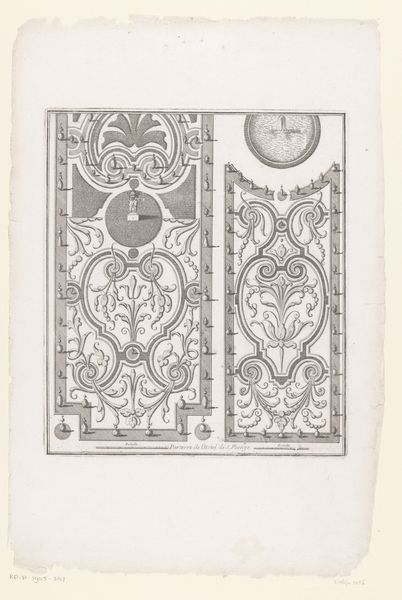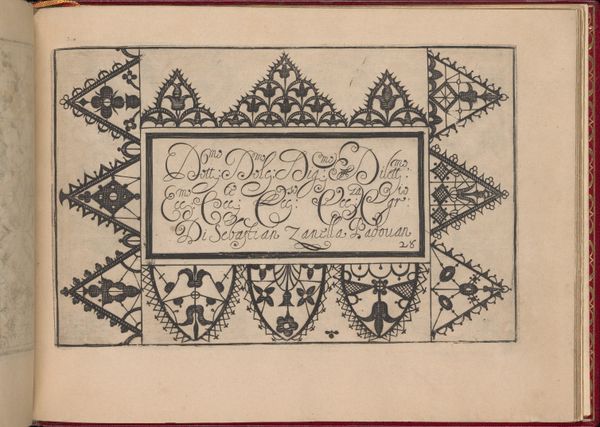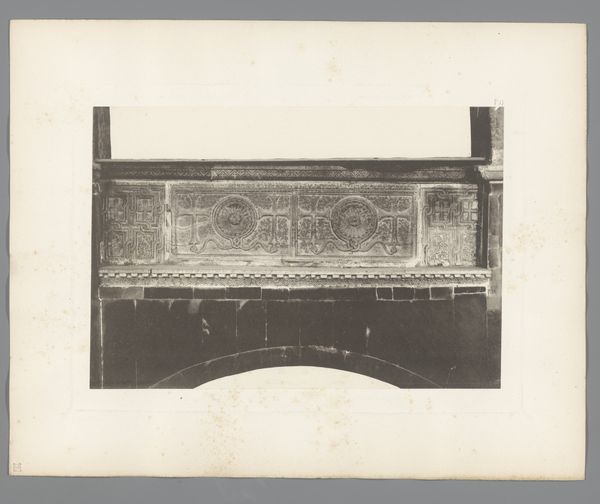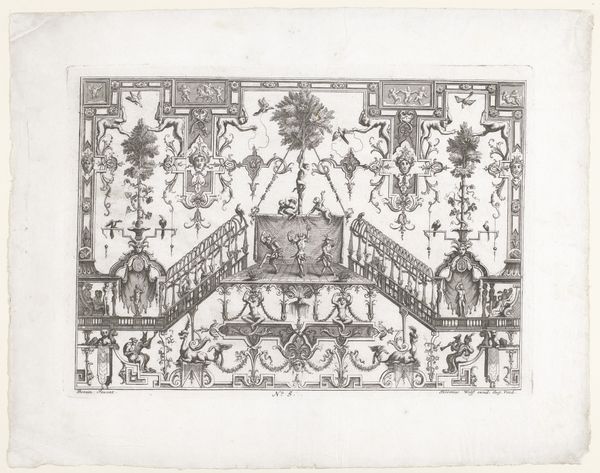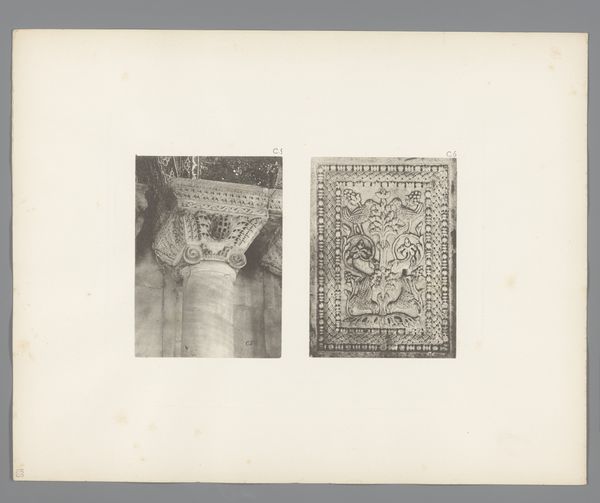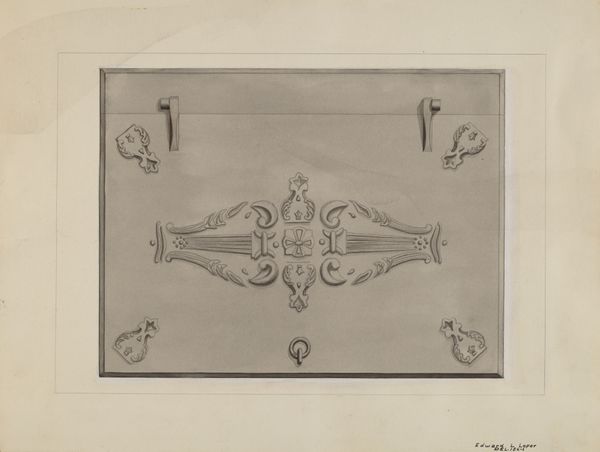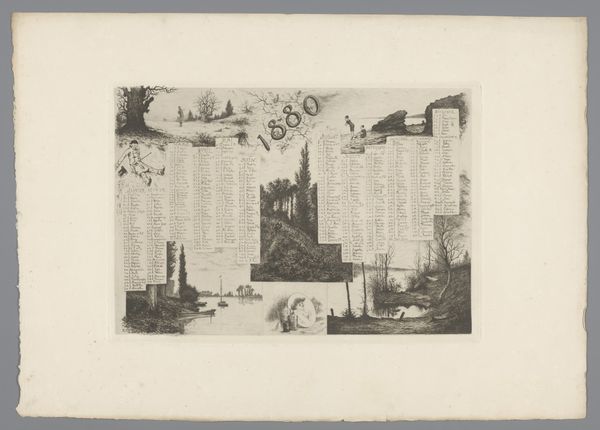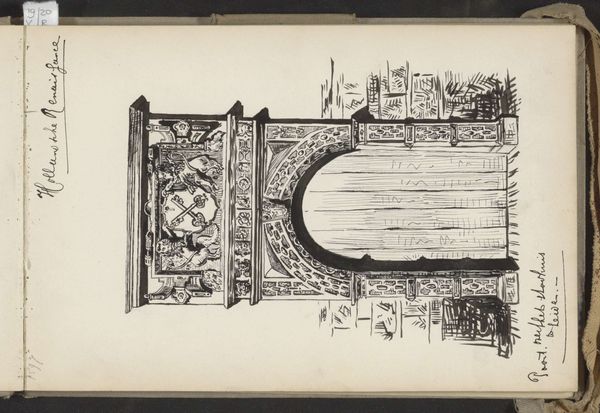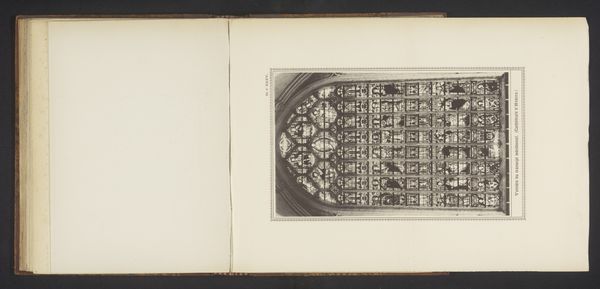
Ontwerp voor de boekomslag van de ingenaaide editie van 'Kunst en samenleving' 1893
0:00
0:00
graphic-art, typography, woodcut
#
graphic-art
#
art-nouveau
#
typography
#
woodcut
#
decorative-art
Dimensions: height 280 mm, width 393 mm, height 345 mm, width 560 mm
Copyright: Rijks Museum: Open Domain
Curator: This is a design for the book cover of 'Kunst en Samenleving', or 'Art and Society', created in 1893 by Gerrit Willem Dijsselhof. The Rijksmuseum holds this particular rendering, which makes extensive use of the woodcut technique and typography. What are your initial thoughts? Editor: It immediately strikes me as a carefully balanced composition. The stark black and white contrasts are softened by the flowing, organic lines that spread outwards. There is such deliberate use of negative space—it feels very controlled. Curator: I find the context of its creation just as compelling as the piece itself. Dijsselhof crafted this work amidst rising social and political awareness concerning the role of art within society, reflecting debates around the purpose of aesthetics, and the growing democratization of art and design for all social classes. Editor: Yes, and from a formalist perspective, the mirroring symmetry is paramount. The design invites us to consider not only balance and rhythm, but also the very materiality of the woodcut – how each precise cut into the wood block contributes to the overall pattern and its expressive qualities. The decorative flourishes feel distinctly Art Nouveau, particularly in their emphasis on curvilinear shapes. Curator: Absolutely. Thinking about those Art Nouveau elements—the work feels representative of its historical moment, encapsulating late 19th-century progressive ideas. This convergence signifies a yearning to embed artwork in broader cultural conversations. The cover also gestures toward the artistic exchange happening across nations during this time. Note the direct textual reference: 'near Walter Crane, door Jan Veth.' The acknowledgement reveals key influences that framed the conceptualizing of art in connection with a quickly modernizing world. Editor: And isn't it intriguing how Dijsselhof uses the very rigid structure of typography in counterpoint with the fluid ornamentation? This tension between constraint and liberty creates an aesthetic push and pull that makes the design visually captivating. It prompts us to observe each line's placement and contribution, ultimately underscoring the symbolic possibilities embedded within this era. Curator: Ultimately, both its artistic language and historic relevance establish the work as a captivating and thoughtful bridge between artistry, society, and the dynamics of social evolution, encouraging us to view art as intertwined with social progress and justice. Editor: I concur; examining its stylistic components provides insights into how it portrays both beauty and meaning, as well as Dijsselhof's individual contributions to the evolution of the art historical tradition.
Comments
No comments
Be the first to comment and join the conversation on the ultimate creative platform.
